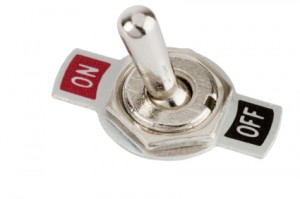
Automatic Transmissions
There are two shift control solenoids on most automatic transmissions. They are identified as “Shift Solenoid A” and “Shift Solenoid B”. An automatic transmission or transaxle produces their different gears by applying hydraulic pressure to, or releasing hydraulic pressure from, the internal mechanisms that holds said gear set engaged. Hydraulic pressure is also used to apply, or release, the internal clutches for the gear sets which allows for the shifts between gears.
The solenoids are electrically applied to block the pressure in the said passage ways and un-apply, in order to open the line for pressure to pass. Depending on which solenoids are enegized (blocking a passage) and de-energized (allowing pressure) there are four possible combinations of ways for SSA and SSB to allow fluid to flow (On-On; On-Off; Off-Off; and Off-On). Those combinations give you the separate gears in your automatic transmission based on the routing of fluid through the transmission’s internal passage ways to the holding devices such as bands and clutch packs.
When a solenoid stops working you typically hear that the transmission isn’t shifting into a gear. With that in mind it is easy to see that the electrical side of any computerized or ‘electronically’ operated transmission is just as important as the mechanical side. All sorts of shift ailments which most folks would consider to be serious are often a shift control solenoid. If fixed asap, no other problems should be present. If left alone, the main problem may lead to other problems, thus embellishing the situation. Leading to a possible transmission failure.
Before you loose your mind if the check engine light comes on and the car seems to be working improperly, seek professional help. Listening to the folks on the forums or the folks who say, “replace this or replace that, $75.00 for diagnosis is a ripoff” is a setup for failure. What I recommend doing is the exact opposite of above expert. Take your car to your trusted mechanic, a well respected transmission shop or the dealership, at least for a diagnosis.
The beauty of a good diagnosis is that you get to the root or the problem fast. Wasting money on replacing parts can be a lot more expensive than getting to the bottom of the problem and making a reliable repair before the problem gets worse. For more information on transmissions, problems, information and more, enjoy more articles on our Blog that meet your interests. Call GotTransmissions.com @ 866-320-1182


